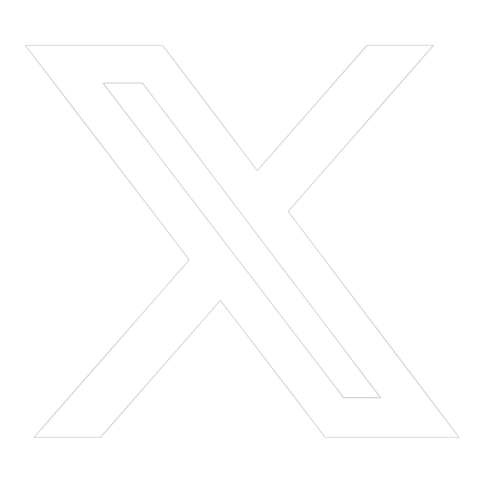Introduction: Breaking Free From Blockchain Silos
Blockchain technology is not without its challenges—one of the biggest being the issue of “blockchain silos.” Many blockchains operate in isolation due to their unique protocols, consensus mechanisms, and governance models, each with their own ecosystem, rules, and technical limitations. This creates significant hurdles for developers who want to build applications that can communicate across multiple blockchains. Without interoperability, developers must select a single blockchain to work on, which restricts the potential of their project and hinders the ability to leverage the distinct strengths of multiple networks.
For early-stage Web3 developers, these blockchain silos can be a major roadblock. Cross-chain functionality is becoming increasingly important as the Web3 ecosystem grows, but implementing it often requires complex integrations and deep technical expertise. This complexity not only slows down development but also increases costs and limits a project’s scalability. As Web3 continues to evolve, the ability to bridge these blockchain silos is key to enabling developers to create scalable, innovative solutions that can interact with a wider range of networks. That’s where Vitreus comes in, offering a powerful solution that makes true interoperability a reality.
The Vitreus Solution: True Interoperability At Layer-0
Vitreus addresses the interoperability challenge at its foundation. Vitreus, being a Layer-0 blockchain, aims to facilitate smooth cross-chain communication, dismantling the obstacles that divide various blockchain ecosystems. While many blockchains offer solutions to scalability and performance, few focus on interoperability. Vitreus distinguishes itself by guaranteeing the seamless operation of decentralized applications across various networks, giving developers the freedom to expand their projects beyond a single ecosystem.
By leveraging Vitreus’ Layer-0 architecture, developers can build dApps that are natively cross-chain compatible. This means they can interact with multiple blockchains, without the need for complex integrations or middleware solutions. By removing the friction often associated with multi-chain development, this native interoperability enables projects to scale more effortlessly and leverage the advantages of diverse blockchain networks, free from technical constraints.
For developers, this is a game-changer. Developers can now transcend the limitations of a single blockchain. Vitreus allows them to build applications that can communicate, share data, and transact across various networks, opening a world of new possibilities for innovation. Whether it's enabling cross-chain DeFi applications, multi-chain NFT platforms, or decentralized data sharing, Vitreus makes it simple for developers to break free from blockchain silos and build applications that thrive in a connected Web3 ecosystem.
Why Interoperability Matters For Small Developers
While large, well-funded Web3 projects may have the resources to invest in complex multi-chain solutions or buy expensive Polkadot parachains at auction, early-stage developers often don’t have that luxury. This makes Vitreus’ cross-chain capabilities particularly valuable for smaller teams. With Vitreus, developers don’t need to reinvent the wheel to make their applications interoperable. The platform’s native cross-chain functionality dramatically reduces the complexity of multi-chain development, giving early-stage projects a head start without requiring deep technical expertise.
For small developers, time to market is critical. Vitreus’ seamless interoperability not only shortens the development cycle but also opens up new opportunities for growth. By tapping into multiple ecosystems, developers can access a larger user base, collaborate with other projects across different blockchains, and take advantage of the strengths that each network offers. Developers can build robust, scalable dApps that span multiple networks from day one, free from the constraints of a single blockchain.
Interoperability also reduces the risk for early-stage projects. By building on Vitreus, developers don’t have to commit to a single blockchain, which could become a bottleneck as their project scales. Instead, they can leverage Vitreus’ modular architecture to create applications that are agile, scalable, and ready to grow across different ecosystems. Smaller teams can now compete on a global scale, unlocking new opportunities without the burden of building custom cross-chain integrations.
The Vitreus Ecosystem: A Hub For Seamless Connectivity
With interoperability at its core, the Vitreus ecosystem provides developers with a range of tools and resources to facilitate seamless cross-chain connectivity. Vitreus’ modular architecture allows developers to build applications that can easily integrate with multiple blockchains, while its developer-friendly tools simplify the process of creating dApps that work across different networks. Teams of all sizes, from small startups to larger enterprises, can access multi-chain development with this plug-and-play approach.
Vitreus’ cross-chain compatibility extends across some of the biggest blockchain networks. This means developers can build dApps that leverage the strengths of different blockchains, whether it’s Ethereum’s vast developer community and liquidity, Polkadot’s focus on parachain interoperability, or Cosmos’s flexibility in connecting different blockchains. Vitreus serves as a central point, enabling developers to construct applications capable of interacting with diverse ecosystems without encountering technical obstacles.
The Vitreus ecosystem also offers a suite of developer tools designed to simplify multi-chain development. From software development kits (SDKs) to documentation and community support, Vitreus empowers developers to build cross-chain applications quickly and efficiently. This makes it easier for small teams to experiment, innovate, and deploy their dApps without the need for extensive technical resources or time-consuming custom integrations.
Conclusion: Build Without Limits On Vitreus
Vitreus is breaking down the walls of blockchain silos, enabling developers to build cross-chain solutions with ease. With its Layer-0 architecture and native interoperability, Vitreus eliminates the technical barriers that have traditionally limited developers to a single blockchain. For early-stage Web3 developers, this means the ability to build scalable, innovative dApps that can communicate across multiple networks without the complexity and cost of traditional cross-chain solutions.
Vitreus’ approach to interoperability is a game-changer for developers looking to scale their projects and tap into new opportunities across the Web3 ecosystem. By leveraging Vitreus’ cross-chain capabilities, developers can unlock new growth potential, reduce development complexity, and bring their projects to market faster. As Vitreus is launching its testnet, now is the time for early-stage developers to take advantage of its groundbreaking technology and build without limits. Developers can take the lead in creating tomorrow's cross-chain applications with Vitreus as the future of Web3 becomes interconnected.
The journey doesn’t stop here! Join the conversation and stay ahead in the Web3 revolution by following us on X and connecting with our vibrant community on Discord. Let’s build the future together—one block at a time. Learn more at Vitreus.io!
Blockchain technology is not without its challenges—one of the biggest being the issue of “blockchain silos.” Many blockchains operate in isolation due to their unique protocols, consensus mechanisms, and governance models, each with their own ecosystem, rules, and technical limitations. This creates significant hurdles for developers who want to build applications that can communicate across multiple blockchains. Without interoperability, developers must select a single blockchain to work on, which restricts the potential of their project and hinders the ability to leverage the distinct strengths of multiple networks.
For early-stage Web3 developers, these blockchain silos can be a major roadblock. Cross-chain functionality is becoming increasingly important as the Web3 ecosystem grows, but implementing it often requires complex integrations and deep technical expertise. This complexity not only slows down development but also increases costs and limits a project’s scalability. As Web3 continues to evolve, the ability to bridge these blockchain silos is key to enabling developers to create scalable, innovative solutions that can interact with a wider range of networks. That’s where Vitreus comes in, offering a powerful solution that makes true interoperability a reality.
The Vitreus Solution: True Interoperability At Layer-0
Vitreus addresses the interoperability challenge at its foundation. Vitreus, being a Layer-0 blockchain, aims to facilitate smooth cross-chain communication, dismantling the obstacles that divide various blockchain ecosystems. While many blockchains offer solutions to scalability and performance, few focus on interoperability. Vitreus distinguishes itself by guaranteeing the seamless operation of decentralized applications across various networks, giving developers the freedom to expand their projects beyond a single ecosystem.
By leveraging Vitreus’ Layer-0 architecture, developers can build dApps that are natively cross-chain compatible. This means they can interact with multiple blockchains, without the need for complex integrations or middleware solutions. By removing the friction often associated with multi-chain development, this native interoperability enables projects to scale more effortlessly and leverage the advantages of diverse blockchain networks, free from technical constraints.
For developers, this is a game-changer. Developers can now transcend the limitations of a single blockchain. Vitreus allows them to build applications that can communicate, share data, and transact across various networks, opening a world of new possibilities for innovation. Whether it's enabling cross-chain DeFi applications, multi-chain NFT platforms, or decentralized data sharing, Vitreus makes it simple for developers to break free from blockchain silos and build applications that thrive in a connected Web3 ecosystem.
Why Interoperability Matters For Small Developers
While large, well-funded Web3 projects may have the resources to invest in complex multi-chain solutions or buy expensive Polkadot parachains at auction, early-stage developers often don’t have that luxury. This makes Vitreus’ cross-chain capabilities particularly valuable for smaller teams. With Vitreus, developers don’t need to reinvent the wheel to make their applications interoperable. The platform’s native cross-chain functionality dramatically reduces the complexity of multi-chain development, giving early-stage projects a head start without requiring deep technical expertise.
For small developers, time to market is critical. Vitreus’ seamless interoperability not only shortens the development cycle but also opens up new opportunities for growth. By tapping into multiple ecosystems, developers can access a larger user base, collaborate with other projects across different blockchains, and take advantage of the strengths that each network offers. Developers can build robust, scalable dApps that span multiple networks from day one, free from the constraints of a single blockchain.
Interoperability also reduces the risk for early-stage projects. By building on Vitreus, developers don’t have to commit to a single blockchain, which could become a bottleneck as their project scales. Instead, they can leverage Vitreus’ modular architecture to create applications that are agile, scalable, and ready to grow across different ecosystems. Smaller teams can now compete on a global scale, unlocking new opportunities without the burden of building custom cross-chain integrations.
The Vitreus Ecosystem: A Hub For Seamless Connectivity
With interoperability at its core, the Vitreus ecosystem provides developers with a range of tools and resources to facilitate seamless cross-chain connectivity. Vitreus’ modular architecture allows developers to build applications that can easily integrate with multiple blockchains, while its developer-friendly tools simplify the process of creating dApps that work across different networks. Teams of all sizes, from small startups to larger enterprises, can access multi-chain development with this plug-and-play approach.
Vitreus’ cross-chain compatibility extends across some of the biggest blockchain networks. This means developers can build dApps that leverage the strengths of different blockchains, whether it’s Ethereum’s vast developer community and liquidity, Polkadot’s focus on parachain interoperability, or Cosmos’s flexibility in connecting different blockchains. Vitreus serves as a central point, enabling developers to construct applications capable of interacting with diverse ecosystems without encountering technical obstacles.
The Vitreus ecosystem also offers a suite of developer tools designed to simplify multi-chain development. From software development kits (SDKs) to documentation and community support, Vitreus empowers developers to build cross-chain applications quickly and efficiently. This makes it easier for small teams to experiment, innovate, and deploy their dApps without the need for extensive technical resources or time-consuming custom integrations.
Conclusion: Build Without Limits On Vitreus
Vitreus is breaking down the walls of blockchain silos, enabling developers to build cross-chain solutions with ease. With its Layer-0 architecture and native interoperability, Vitreus eliminates the technical barriers that have traditionally limited developers to a single blockchain. For early-stage Web3 developers, this means the ability to build scalable, innovative dApps that can communicate across multiple networks without the complexity and cost of traditional cross-chain solutions.
Vitreus’ approach to interoperability is a game-changer for developers looking to scale their projects and tap into new opportunities across the Web3 ecosystem. By leveraging Vitreus’ cross-chain capabilities, developers can unlock new growth potential, reduce development complexity, and bring their projects to market faster. As Vitreus is launching its testnet, now is the time for early-stage developers to take advantage of its groundbreaking technology and build without limits. Developers can take the lead in creating tomorrow's cross-chain applications with Vitreus as the future of Web3 becomes interconnected.
The journey doesn’t stop here! Join the conversation and stay ahead in the Web3 revolution by following us on X and connecting with our vibrant community on Discord. Let’s build the future together—one block at a time. Learn more at Vitreus.io!









